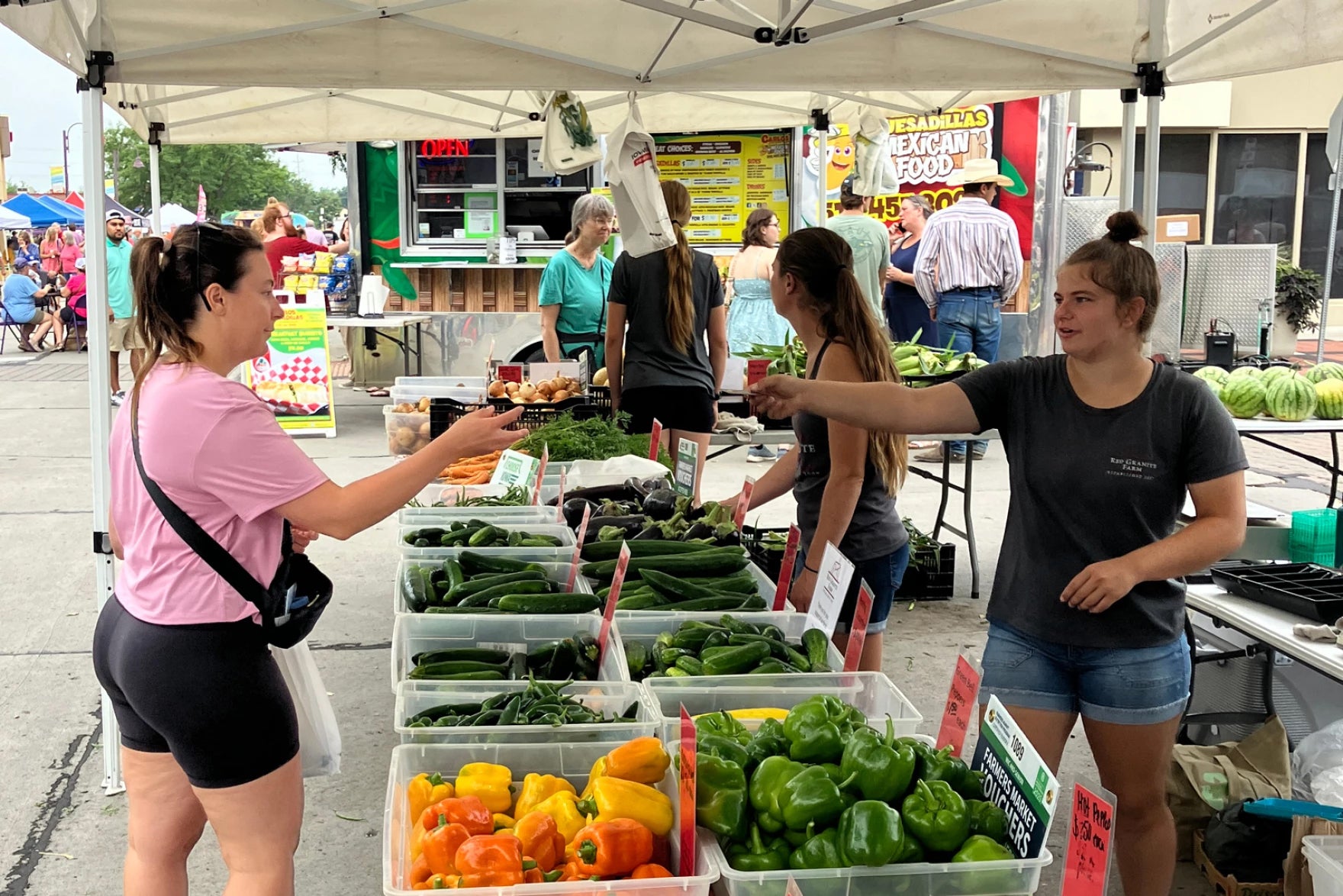Grocery stores across the country are reporting a return of supply chain issues seen at the start of the pandemic, with some stores struggling to keep popular food items on their shelves.
Nick Hansen is an owner of Hansen’s IGA, which has 11 stores mostly in western Wisconsin. He said it’s been harder to get orders in since September, and now service levels are back to where they were in March 2020.
“It’s been a slow train wreck here for months, and it’s just gotten worse and worse,” Hansen said.
News with a little more humanity
WPR’s “Wisconsin Today” newsletter keeps you connected to the state you love without feeling overwhelmed. No paywall. No agenda. No corporate filter.
He said a lack of labor, either because of COVID-19 infections or hiring issues, is the biggest hold up for the industry. That includes everyone from semitruck drivers to workers in distribution warehouses.
Hansen said his business is only getting about half of what they order during a given week because his distributor doesn’t have enough employees to fill orders.
“(Our distributor) even went to the extent of limiting how much we can order just because they’re saying, ‘We only have so much labor in our warehouse,’” he said. “We’re trying to prioritize the highest moving (products), and there’s a lot of variety that we’re just having to say we can’t even order it because we don’t want to use up our cases that we can get.”
Hansen said his own stores have had some workforce challenges. They’ve raised wages to attract and retain workers and feel lucky to have seen fewer COVID-19 infections this winter than they had at the end of 2020.
Tim Metcalfe, president and co-owner of Metcalfe’s Market in Madison and Wauwatosa, has been stocking produce at one of his stores all week because they’re down employees.
He said everyone at the store is pitching in to make sure people can still get their days off, but they’re not immune to workforce issues seen across the supply chain.
“Every employer is feeling the difficulties that this surge presents in terms of staffing levels or people that are exposed that have to be quarantined,” Metcalfe said. “It’s been a difficult market to find people to work in the first place, just training the applicants, but then having to lose people because of a surge in the community right now has made things even more difficult for manufacturing, distribution and retail.”
Metcalfe said availability of products has been a challenge since the start of the pandemic, but things were improving greatly in December. He said they had finally reached 98 percent of products in stock for the first time since March 2020, but started seeing out of stock notices from their distributor popping up after the start of the year.
“It’s kind of hit or miss. We’ll have it on one item, you know a certain type of milk, let’s say 1 percent, but we have 2 percent, skim, whole. And we have it in three different companies, but one company might be struggling,” Metcalfe said.
Metcalfe said he doesn’t think there is a shortage of any products at this time. But he said more serious supply chain disruption could be on the horizon if the current surge in cases caused by the omicron variant continues.
Brandon Scholz is head of the Wisconsin Grocers Association. He said the current supply chain problems are different than those seen in early 2020. The sudden increase in demand at grocery stores, especially for cleaning products and shelf stable food items, was the main cause behind empty shelves early on. But he said problems shifted last year when manufacturers and distributors started struggling to maintain their workforce, either because people were leaving their jobs or because of COVID-19 infections and deaths.
“The workforce started to leave various businesses including in the supply chain, those manufacturers, producers, growers, others in the front end that make the things… They weren’t able to make as much as they used to,” Scholz said.
With consumer demand still high at grocery stores, Scholz said all of these factors are also why prices for some products have gone up. But he said consumers shouldn’t panic when they see an empty shelf in person or in a photo on social media.
“You and I could walk through almost any grocery store in Wisconsin today and we’re going to find some categories that have empty shelves or maybe half of what they used to,” Scholz said. “But you’re going to have a pretty full store… Nobody wants an empty shelf… But you can’t put something on the shelf if you can’t get it.”
He said after almost two years of supply chain changes, most consumers have gotten used to accepting a substitute for their favorite products.
Hansen said having a smaller chain of stores has helped his business be more nimble at times. His stores need less product to serve the small communities where they’re located, and they’ve been able to keep some hard-to-find items like toilet paper on their shelves even when the biggest chains ran out. He said hearing customers’ appreciation for their independent business has been an unexpected bright spot during the pandemic.
But Hansen warns the scarcity on grocery store shelves likely won’t get better for months and there’s little individual stores can do to change that.
“Be patient with people in the grocery store. Those employees, they have to put up with a lot and they’re doing their best,” Hansen said. “People are going to need a lot of patience here for the next month or so, because what we got is what we got.”
Metcalfe encouraged consumers to continue showing appreciation for frontline workers like those in grocery stores and to consider moving back to shopping practices adopted at the start of the pandemic, like making fewer trips to the grocery store by buying more at once, in order to slow the potential for virus spread.
Wisconsin Public Radio, © Copyright 2025, Board of Regents of the University of Wisconsin System and Wisconsin Educational Communications Board.







